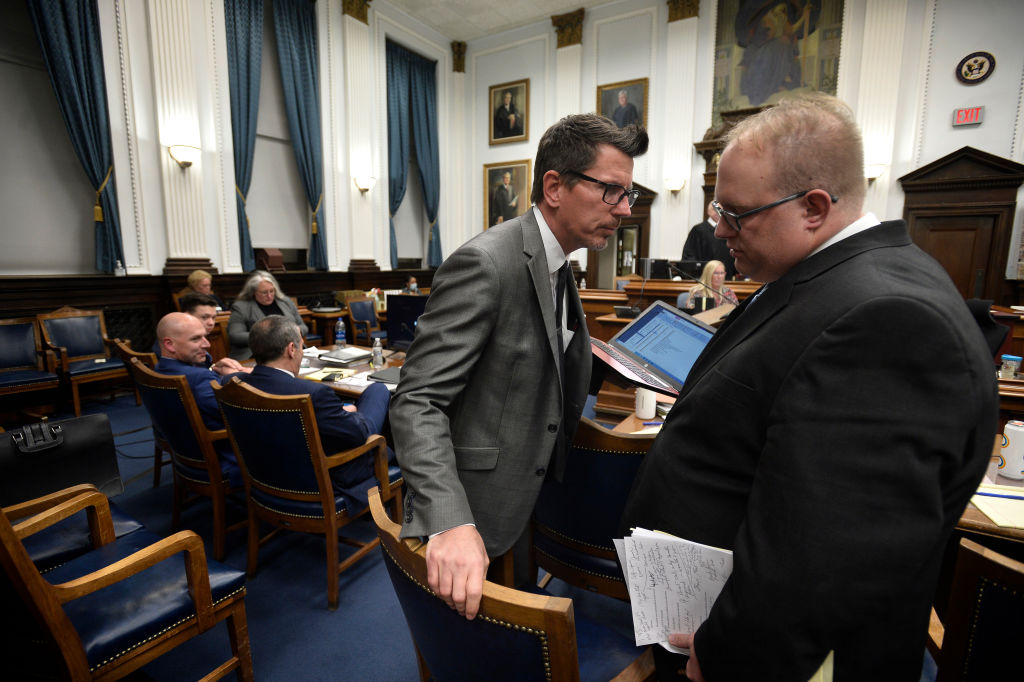In the midst of the Kyle Rittenhouse trial that is garnering national attention, there has been a debacle over the drone footage evidence.
Rittenhouse is on trial for the fatal shootings of two men and the wounding of a third, in Kenosha, Wisconsin, on Aug. 25, 2020.
NPR reported that the now-18-year-old faces five felony counts: first-degree intentional homicide for the death of Anthony Huber, first-degree reckless homicide for the death of Joseph Rosenbaum, two counts of reckless endangerment for firing a gun near others and first degree attempted intentional homicide for the wounding of Gaige Grosskreutz.
As the jury is on the second day of deliberation after hearing testimony and evidence in the case, the jurors asked to review the video evidence, CNN reported.
The jury asked Judge Bruce Schroeder whether members could view the video in a private room or in the courtroom. The judge said the jury would have to view the evidence in the courtroom, without any of the public or members of the media present.
But now the prosecution and defense are clashing over the fact that the defense allegedly received lower-quality videos of the drone footage. On this basis, the defense moved for a mistrial.
The prosecution said they provided the defense with videos from the drone that show the first shooting, in which Rosenbaum was shot and killed.
However, the defense says that the videos they received were of lower quality.
Assistant District Attorney James Kraus then explained to Schroeder that the prosecution had not intentionally done this, but that there was an accidental compression involved in moving video between iPhone and Android devices.
“Detective [Martin] Howard asked them how they would like to receive it. Miss [Natalie] Wisco asked that it be emailed to her. He emailed her the file. Now somewhere along the lines, whether it was … it appears the issue is, I believe Miss Wisco could not have it airdropped because she has an Android phone. Going from an iPhone to an Android, it appears somehow compressed the file. We did not know that this would occur,” Kraus said.
Prosecutor confirms they sent the drone video to the defense team via text, which compressed the file. pic.twitter.com/Qrkd52YjrC
— The Post Millennial (@TPostMillennial) November 17, 2021
Kraus said that the prosecution had nothing to do with altering the video that the defense was given.
“If I knew how to compress files, and do all these technology things, I’d have a much better job,” Kraus said, according to Breitbart News.
Wisco, an attorney on Rittenhouse’s defense team, then clarified that every other piece of evidence that had come from the state crime lab throughout this case had been sent to them via Dropbox.
Dropbox provided them with an exact copy of what the state had, Wisco said. So, if the defense was given the same exact video that the prosecution had, then the file name should have been the same. But the defense said the video they received had a different file name.
“The file I received originally on Friday the 5th, was not labelled that same, and was not the same file amount. There’s no way that what ADA Kraus is saying is true because the file name would not have changed if my computer was compressing anything. It was a different file that we were provided from what was provided to the state. At least for what attorney Binger gave me on Saturday, they’re completely different,” Wisco explained.
Defense says the filename sent earlier was not similar to the filename given over the weekend. pic.twitter.com/fJbT2CPDbG
— The Post Millennial (@TPostMillennial) November 17, 2021
Previously, Rittenhouse’s defense had asked the judge for a mistrial on different grounds, and the judge had yet to rule on that.
Now, with the issue over the drone video evidence, the defense is asking for a mistrial “without prejudice,” which means that the prosecution could actually refile charges.
If there was a mistrial with prejudice and a dismissal of the case, the plaintiff would not be able to refile the same claims in that court.
This article appeared originally on The Western Journal.

























 Continue with Google
Continue with Google